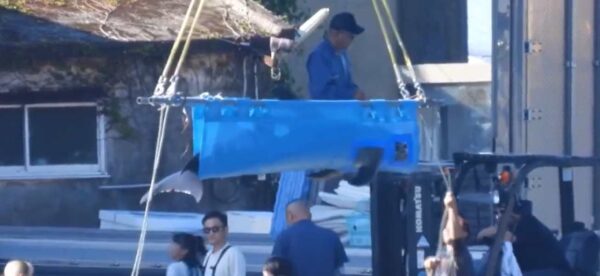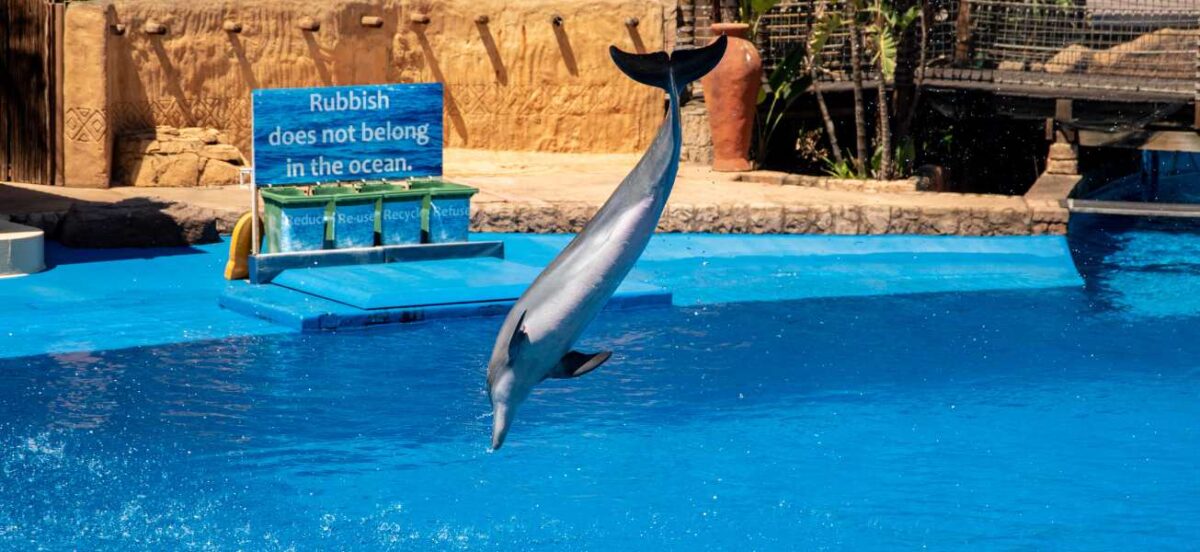From Taiji to tanks: The global live dolphin trade
Every year, from September to March, the Taiji dolphin hunts take place in Japan. While many people are familiar with the slaughter aspect of the hunts, fewer realise that live-captured dolphins make up the most lucrative part of this industry.
Since the 2023/24 season, the number of dolphins slaughtered has dropped by 45% – but the number captured for captivity is now over six times higher. The industry is shifting, with marine parks driving demand for live-caught dolphins, making it more critical than ever to disrupt the trade at its source.
The economic incentive is why marine parks and aquariums fuel the Taiji hunts – a single dolphin sells for several hundreds of thousands yen. Without demand for live dolphins, the hunts would not be financially viable.
Who buys dolphins from Taiji?
Dolphins captured in Taiji do not stay in Japan. Instead, they are shipped to marine parks and dolphinariums worldwide. Based on transport records and trade data, these are some of the major buyers of Taiji dolphins:
- Thailand – A major destination for wild-caught dolphins, with marine parks marketing dolphin shows and swim-with-dolphin experiences to tourists.
- China – A large importer of live dolphins, where demand for dolphin entertainment is rapidly growing.
- Middle East – Countries like the UAE and Egypt have been known to purchase dolphins from Taiji for dolphin entertainment parks.
- Russia – Historically, Russia has imported dolphins for use in marine parks and public aquariums.

Credit: Kunito Seko
How dolphins are captured and transported
1. Selection in the Cove
During an interview with an ex-Taiji trainer, trade secrets were revealed. Once a pod of dolphins is driven into the Taiji cove, trainers and marine park representatives work alongside hunters to select individuals for captivity. Their primary criteria include:
- Young, female bottlenose dolphins (the most sought-after species for marine parks).
- Dolphins that appear “trainable” based on behaviour and response to human interaction.
- Dolphins with minimal visible injuries, as scarring or damage reduces their market value.
Dolphins not chosen for captivity are either slaughtered for meat or released, often injured and traumatised, with no guarantee of survival.
2. Training and Starvation
Captured dolphins do not immediately go to marine parks. Instead, they are typically held in sea pens for months, where they undergo intensive training before transport. This training often involves food deprivation, where dolphins are starved until they comply with commands.
According to former trainers who have worked in Taiji, this period is critical in ensuring that dolphins are conditioned for a life in captivity. Those that fail to adapt may not survive.
3. Transport to Marine Parks
Once trained, the dolphins are prepared for transport. This process is highly stressful:
- They are confined in small water-filled crates and transported via truck to the airport.
- Some dolphins endure international flights lasting over 10 hours, increasing their risk of dehydration, shock, or injury.
- The final destination is often a small, chlorinated tank, where they will spend the rest of their lives performing for tourists.
The role of tourism in the live dolphin trade
Many people who visit marine parks and dolphinariums do not realise they are supporting the global trade in wild-caught dolphins. The dream of seeing dolphins up close or swimming with them is what keeps these businesses profitable.
Marine parks rarely disclose where their dolphins come from. Instead, they market captivity as “educational” or “conservation-focused,” despite overwhelming evidence that captivity harms dolphins.
This is why awareness is crucial. If more tourists knew that the dolphins they see in marine parks were forcibly removed from their families, subjected to starvation-based training, and transported across the world, many would choose ethical alternatives instead.
What needs to change?
The Taiji dolphin trade continues because it remains profitable. But global awareness is shifting, and there are key ways to disrupt this industry:
- Stronger legal protections – Many governments and organisations will turn a blind eye to the cruelty of live dolphin imports and captivity – because it is still legal. Until stronger international protections are in place, this fall back excuse will continue to be used by corporations and decision makers.
- Transparency from marine parks – Travel companies and marine parks should be required to disclose where their dolphins come from.
- Consumer awareness – The more people understand the reality of dolphin captivity, the less demand there will be for dolphin entertainment. We’re planning to educate people far and wide, starting with tourists in Thailand.
The Taiji hunts may have ended for this season, but the trade continues year-round. Until the demand for captive dolphins stops, the cycle of suffering will continue.
Help end the live dolphin trade
The Taiji dolphin hunts continue because there is money to be made from captivity. Every time a dolphin is taken from the wild, transported across the world, and placed in a tank, this cruel industry profits. But awareness is growing, and together, we can disrupt the trade and bring it to an end.
There are many ways to take action – choosing ethical dolphin tourism, sharing the truth about captivity, and pushing for legislative change. But exposing and dismantling the industry also takes resources, investigations, and sustained pressure on decision-makers.
If you want to help accelerate the fight to stop the live dolphin trade, your support can make a real impact.
A contribution today can help
- Fund investigations into where Taiji dolphins are sent after capture
- Pressure airlines, airports, and investors to cut ties with the dolphin trade
- Expand awareness campaigns in major tourist destinations
Every action counts. Every voice matters. And with the right pressure, we can stop this trade for good.
